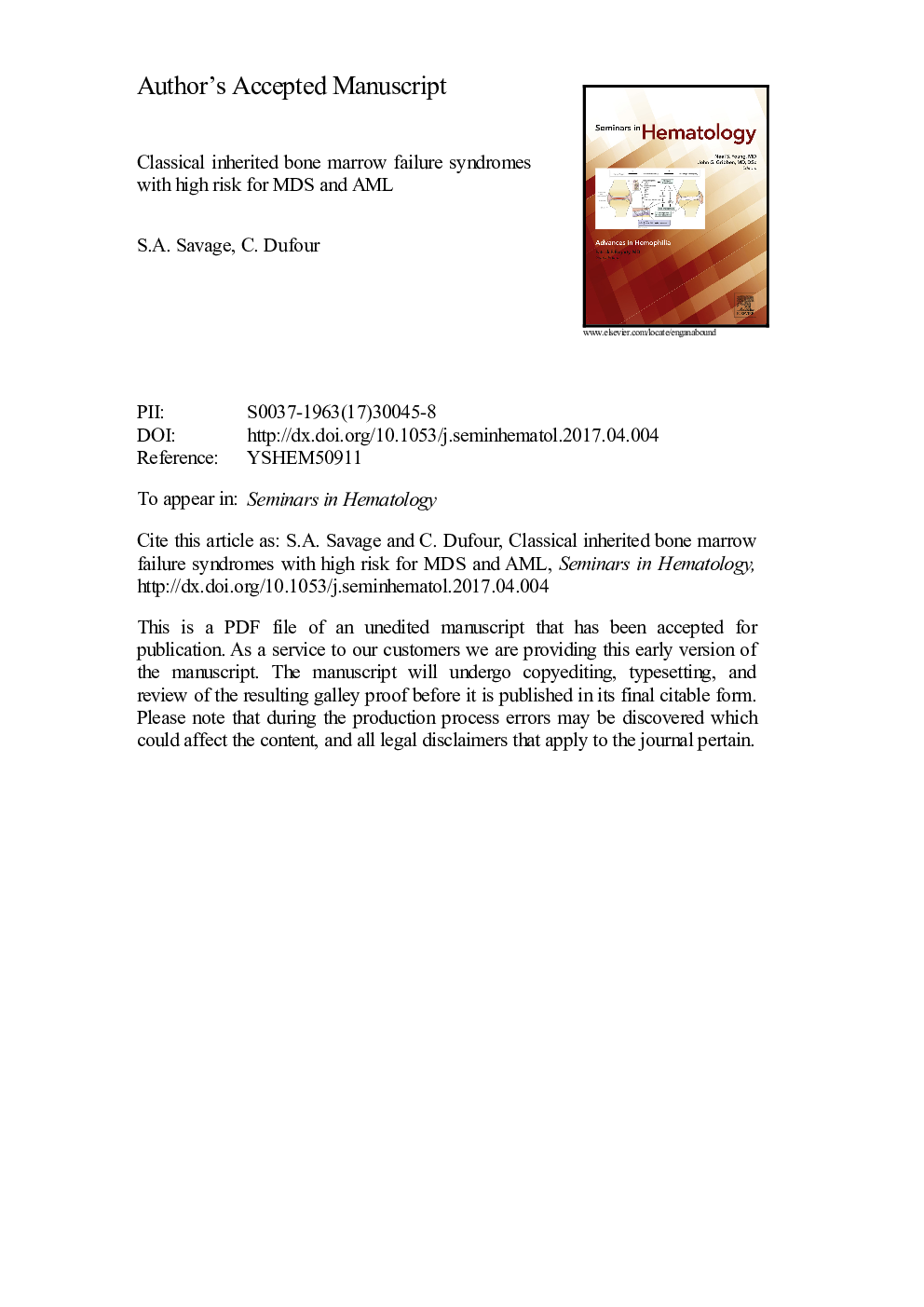| Article ID | Journal | Published Year | Pages | File Type |
|---|---|---|---|---|
| 5664422 | Seminars in Hematology | 2017 | 38 Pages |
Abstract
The inherited marrow failure syndromes (IBMFS) are a heterogeneous group of diseases characterized by failure in the production of one or more blood lineage. The clinical manifestations of the IBMFS vary according to the type and number of blood cell lines involved, including different combinations of anemia, leukopenia, and thrombocytopenia. In some IBMFS, systemic non-hematologic manifestations, including congenital malformations, mucocutaneous abnormalities, developmental delay, and other medical complications, may be present. Fanconi anemia (FA), caused by germline pathogenic variants in the DNA repair genes comprising the FA/BRCA pathway is associated with congenital anomalies, bone marrow failure, and increased risk of myelodysplastic syndrome (MDS), acute myelogenous leukemia (AML), and solid tumors. Dyskeratosis congenita (DC) is a telomere biology disorder (TBD) caused by aberrations in key telomere biology genes. In addition to mucocutaneous manifestations, patients with DC are at increased risk of marrow failure, MDS, AML, pulmonary fibrosis, and other complications. Ribosomal biology defects are the primary causes of Diamond Blackfan anemia (DBA) and Shwachman Diamond syndrome (SDS). In addition to pure red blood cell aplasia, DBA is associated with elevated risk of solid tumors, AML, and MDS. Patients with SDS have pancreatic insufficiency, neutropenia, as well as MDS and AML risks. Patients with severe congenital neutropenia (SCN), caused by pathogenic variants in genes essential in myeloid development, have profound neutropenia and high risk of MDS and AML. Herein we review the genetic causes, clinical features, diagnostic modalities, predisposition to malignancies with focus on leukemogenic markers whenever available, and approaches to treatments of the classical IBMFS: FA, DC, SDS, DBA, and SCN.
Related Topics
Health Sciences
Medicine and Dentistry
Hematology
Authors
Sharon A. Savage, Carlo Dufour,
